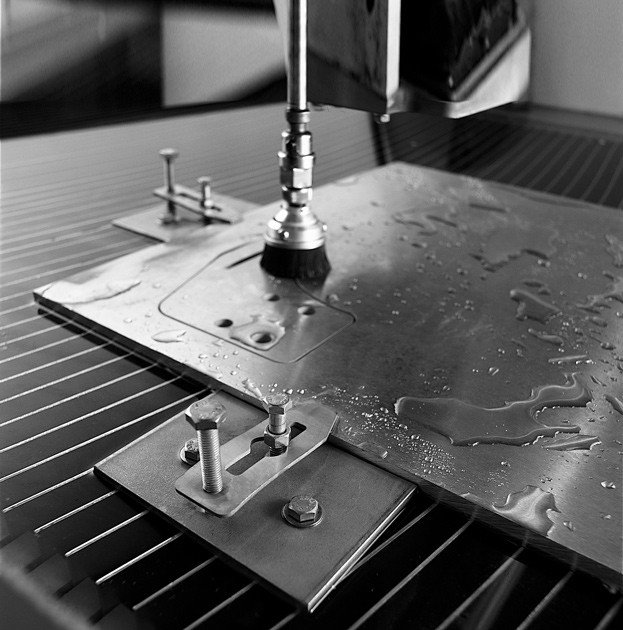
online waterjet cutting parts service
Get your waterjet cutting prototypes and production parts delivered within days
Custom waterjet cutting service
MXY provides an online personalized waterjet cutting service for metal, plastic, rubber, foam, and wood. Our laser cutting service is a cost-efficient and readily available solution for all your manufacturing requirements. We cater to a diverse range of materials, such as various metals, plastics (including acrylic), rubber, foam, and wood. Whether you require a single prototype, low-volume, batch, or high-volume production, we can accommodate your needs.

Available Materials for waterjet Cutting
| Aluminum | Brass/Bronze |
| Copper | Plastics |
| Steel | Invar |
| Titanium | Glass-filled polymer |
| Zinc | Carbon steel |
| Monel | mild steel |
waterjet Cutting Applications

Models Depicting Concepts
Product developers can easily produce physical prototypes of their designs using plastic 3D printing, thanks to its speed and versatility in the iterative process.

Rapid Prototyping
Plastic 3D printing enables the production of functional plastic prototypes, including moving parts and all-in-one assemblies.

Digital Production Directly
Plastic 3D Printing is perfect for creating numerous customized or individual parts due to its exceptional precision and reliability.
waterjet Cut Metal Standard Tolerances
| Description | Standard Tolerance |
|---|---|
| Standard Tolerances | To obtain comprehensive information regarding the tolerances sheet cutting service, such as edge to edge tolerance and taper, kindly contact us. |
| Thickness | The material blank determines the tolerances for thickness. |
| Minimum Recommend Part Size | 1.000″ |
| Minimum Size | The minimum thickness required is 0.062″, which is twice the thickness of the material. |
| Kerf (slit size) | Nearly 0.020″ |
| Edge Condition | The cut face of laser cut parts will exhibit a vertical striation. |
overview: What is waterjet cutting?
Fundamentals of Waterjet
Unlike traditional cutting methods, a waterjet cutter uses a high-pressure stream of water to erode the material, resulting in clean and precise cuts without any heat-affected zones or distortion. This makes it ideal for intricate designs and delicate materials that require a gentle touch. With its ability to cut through materials of varying thicknesses and hardness, a waterjet cutter is widely used in industries such as aerospace, automotive, and manufacturing. It can effortlessly handle complex shapes, bevels, and even 3D cutting, making it a go-to solution for many professionals.
Mechanics of Waterjet
Waterjet is an advanced technology that utilizes a high-pressure stream of water mixed with abrasive particles to cut through various materials with precision and efficiency. It is a versatile tool that can handle a wide range of materials, including metals, plastics, ceramics, and even stone.


benefits of waterjet
One of the key advantages of waterjet is its ability to cut intricate shapes and designs with utmost accuracy, leaving behind smooth edges without any heat-affected zones. This makes it an ideal choice for industries such as aerospace, automotive, and manufacturing, where precision is paramount.
Why choose mXY

Endless choices
Select from a wide range of options for your order, including various materials, finishes, tolerances, markings, and certifications.

User-friendly
Have your parts conveniently delivered to your doorstep, eliminating the need for sourcing, project management, logistics, or shipping.

Verified Network
Our certifications include ISO 9001:2015, ISO 13485, and AS9100D. Only the best shops that meet our standards become Suppliers.
